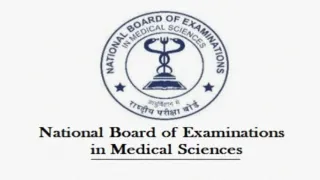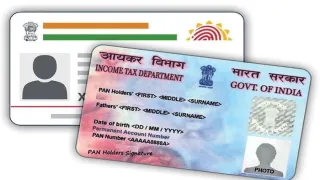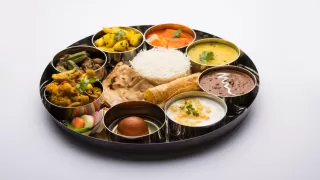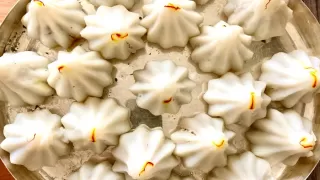It is a divine experience to sample Ayodhya's well-known cuisine while taking in the city's immaculate surroundings. Hindus believe that Lord Ram, the seventh avatar of Lord Vishnu, was born in Ayodhya, which is well-known worldwide. As the capital of the Kosala Kingdom, headed by King Dasharatha, the father of Lord Ram, the city is referenced in the ancient Hindu epic the Ramayana.
Street cuisine and regional specialities are popular in Ayodhya in addition to its spiritual significance. Discover the city's gastronomic journey. For individuals who are considering visiting Ayodhya, these are a few options.
Top 10 Foods to explore during your visit to Ayodhya
Bedai Poori or Bedami Poori

Image Source: Twitter
Popular as a morning meal, this is a well-known Ayodhya cuisine. A spicy lentil mixture is filled into a deep-fried wheat flour baguette. Sun-dried and powdered moong dal, or urad dal, is blended with cumin, fennel, asafoetida, and red chilli powder to make the lentil combination. In addition to yoghurt or raita, bedai poori is sometimes eaten with aloo sabzi, a hot and spicy potato dish. Both residents and tourists love it because of the delicious balance of taste and texture created by the combination of the crunchy Bedai poori and the flavorful aloo sabzi.
Ram Laddoo

Image Source: Twitter
North Indian cuisine is the source of the well-known street food treat known as ram ladoo. These little dumplings made from deep-fried lentils are a cultural experience as well as a culinary treat. These crispy, golden-brown treats are seasoned with a mixture of herbs and spices and are made from soaked and crushed yellow moong dal. After they are perfectly cooked, they are topped with a substantial amount of tart tamarind chutney and a dash of chaat masala.
Kheer

Image Source: Twitter
During celebrations, Ayodhya's dessert tables are decked with the rich rice pudding known as kheer. This sweet treat is a traditional Ayodhya meal composed of rice, milk, cardamom, and saffron. It honours the significance of dairy in the city's culinary tradition, pleases the palate, and adds a dash of sweetness to celebratory celebrations.
Kachori

Image Source: Twitter
Ayodhya's signature deep-fried dish, kachori, is well-known for its spicy stuffing and crunchy outside. In order to create a contrast of flavours between the spicy filling and the tangy and refreshing chutney, it is frequently served with mint or tamarind chutney. Kachori is a significant component of Ayodhya's cultural heritage since it embodies the rich and varied tastes of the region's food. Enjoyed for its deliciousness or as a celebratory food, it is a popular snack.
Khurchan Peda

Image Source: Twitter
For thirty years, Chandra Mishthan Bhandar has been producing khurchan pede in Ayodhya. The shop's proprietor, Sumit Gupta, stated in an interview that cow's milk is used to make the treat. Add sugar and cardamom to the khoya and roast till light golden brown. The treat is called khurchan peda because the khoya is scraped out of the container. It is a delicacy that residents of the city have been enjoying for years, so if you want to visit Ayodhya, be sure to sample it. This delicacy may cost above Rs 350 per kilogram.
Samosa

Image Source: Twitter
As popular as it is throughout the nation, samosas are among the top foods in Ayodhya. It is composed of a crispy pastry that is filled with a blend of spicy potatoes and peas. After shaping it into a triangle or a cone shape using all-purpose flour, the pastry is filled with the potato mixture and deep-fried until golden brown. Because they may be eaten as a snack at any time of day, samosas are quite popular in Ayodhya. Samosas may be easily found all around the city from street food vendors, eateries, and confectionary shops. Samosas became a mainstay, consumed as part of the festive celebrations, especially during festivals like Diwali, Holi, and other religious occasions.
Ladoo

Image Source: Twitter
Ladoos are a staple of many cultures and are frequently connected to religious ceremonies, festivals, and festivities. The holy city is home to a variety of ladoo varieties, including Besan Ladoo, Boondi Ladoo, Motichoor Ladoo, and Atta Ladoo. Every ladoo has a different flavour and texture. Giving it to Gods during religious rites is known as 'prasad,' a unique offering. This consecrated food is distributed among devotees following the rites as a sign of the favour and blessings of God.
Chaat

Image Source: Twitter
Ayodhya is known for its chaat cuisine. This street cuisine blends a range of flavours and textures into a savoury snack. For its delightful flavour and pleasant crunch, chaat is a favourite among both locals and visitors in Ayodhya. Foods including fried flatbread, potatoes, chickpeas, yoghurt, green and tamarind chutneys, and a mixture of spices are commonly used to make chaat. Popular chaat varieties in the area include Golgappa, Papdi Chaat, Dahi Bhalla, and Aloo Tikki Chaat. Every bite of Ayodhya's chaat dishes delivers a blast of spicy, acidic, and sweet tastes, delivering a delicious sense of the city's culinary heritage.
Malpua

Image Source: Twitter
Popular in Ayodhya, malpua is a classic Indian delicacy. This dessert, which resembles pancakes, is produced by deep-frying a batter consisting of flour, milk, and sugar, and then soaking it in syrup. In addition to the usual garnish of almonds or rabri, the meal is frequently enhanced with flavours like cardamom or fennel seeds. Malpuas are very popular during the Holi festival and other Ayodhya festivals. The city's popularity of the dessert demonstrates the area's fondness for decadent desserts and rich culinary traditions. A must-try dish for anybody wishing to sample real Indian food, malpua is a part of Ayodhya's varied culinary scene.
Rabri

Image Source: Twitter
Another delectable treat, Rabri is a customary Ayodhya dish. It is made by gradually reducing and thickening milk. This method produces a creamy texture and a distinctive consistency by re-stirring in the milk solids. Rich and flavorful, rabri is enhanced with cardamom and saffron and garnished with chopped almonds. Enjoyed on its own or combined with desserts such as malpua or jalebi, rabri exemplifies the region's love of decadent foods. Ayodhya's local chefs skillfully prepare this dish. Receiving Lord Ram's blessings and then indulging in mouthwatering Rabri is such a satisfying experience.
Also Read: Reasons for Visiting Goa in February 2024

































